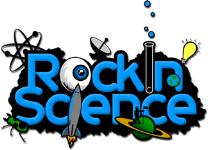
Artist’s concept of NASA’s Lunar Atmosphere and Dust Environment Explorer (LADEE) spacecraft in orbit above the moon. Credit: NASA Ames / Dana Berry
The presence of neon in the exosphere of the moon has been a subject of speculation since the Apollo missions, but no credible detections were made till now. There’s not enough neon to make the moon visibly glow because the moon’s atmosphere is extremely tenuous, about 100 trillion times less dense than Earth’s atmosphere at sea level. A dense atmosphere like Earth’s is relatively rare in our solar system because an object has to be sufficiently massive to have enough gravity to hold onto it.
The behavior of a dense atmosphere is driven by collisions between its atoms and molecules. However, the moon’s atmosphere is technically referred to as an exosphere because it’s so thin, its atoms rarely collide. Exospheres are the most common type of atmosphere in our solar system. “It’s critical to learn about the lunar exosphere before sustained human exploration substantially alters it,” Benna said. Rocket exhaust and outgassing from spacecraft could easily change its composition.
Most of the moon’s exosphere comes from the solar wind, electrically conducting gas blown from the surface of the sun into space at around a million miles per hour. Mainly hydrogen and helium, it also contains many other elements in small amounts, including neon. All these elements impact the moon, but only helium, neon, and argon are volatile enough to be returned back to space. The rest of the elements will stick indefinitely to the moon’s surface.
The LADEE NMS instrument confirms that the moon’s exosphere is made up of mostly He, Ar, Ne. Their relative abundance is dependent on the time of day on the moon -argon peaks at sunrise, with neon at 4 a.m. and helium at 1 a.m. NMS also showed that some gas comes from lunar rocks. Argon-40 results from the decay of naturally occurring radioactive potassium-40 in the rocks of all terrestrial planets as a leftover from their formation. “We were also surprised to find that argon-40 creates a local bulge above… the region containing Mare Imbrium and Oceanus Procellarum,” said Benna.
Argon increased, then decreased by ~25% during the LADEE mission, which may be due to enhanced outgassing from the surface that is triggered by tidal stress on the moon. “About 20% of the helium is coming from the moon itself, most likely as the result from the decay of radioactive thorium and uranium, also found in lunar rocks,” said Benna. He is being produced 7L/s at standard atmospheric pressure.
“The data collected by the NMS addresses the long-standing questions related to the sources and sinks of exospheric helium and argon that have remained unanswered for four decades,” said Benna. “These discoveries highlight the limitations of current exospheric models, and the need for more sophisticated ones in the future.” http://www.nasa.gov/content/goddard/ladee-lunar-neon








Recent Comments